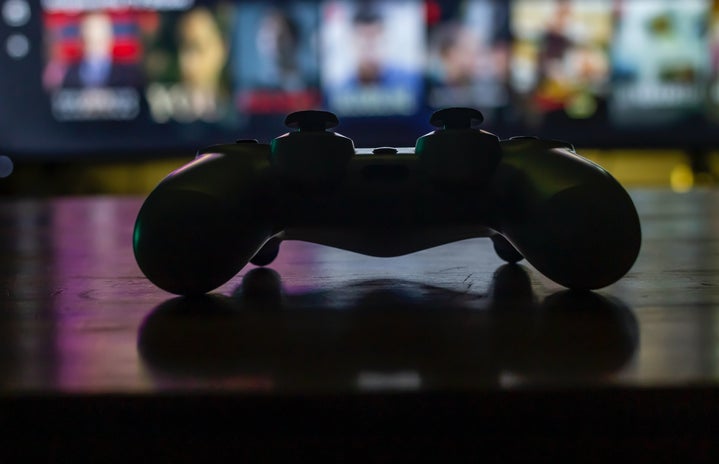This article contains spoilers for HBO’s The Last of Us.
HBO’s The Last of Us finally wrapped up season one with an intense and dramatic finale. The show is receiving largely positive reviews and boasts a whopping 96% on Rotten Tomatoes. The Last of Us manages to do something where so many other video game adaptations fall short; almost all fans are happy. Other video game adaptations, such as the Warcraft movie (2016) or Tomb Raider movie (2018) have TomatoMeter scores of 29% and 53%, respectively. So what did The Last of Us do differently? How was it so successful? How do you please a video game fan?
To start, the casting of The Last of Us was phenomenal. Pedro Pascal plays Joel Miller, a single parent who loses his daughter shortly after the outbreak of Cordyceps, a deadly, zombie-like virus. At the start of the show, he is instructed to take a girl, Ellie (Bella Ramsey), to a hospital out west. The goal is to use Ellie to develop a vaccine since she was bitten and never infected with Cordyceps. Pascal and Ramsey share the chemistry necessary to perform such a beloved relationship on screen. They do justice to Joel’s initial hesitancy to get close to Ellie in fear of losing her the same way he lost his daughter, Sarah. Ramsey does a fantastic job of portraying a preteen simultaneously desperate for attention and fearful of losing those close to her. In episode 8, Ellie is taken captive by a religious cult. At the end of the episode, Ellie escapes after a brutal, intense fight scene against the cult’s leader. Ramsey’s performance is incredible, she is emotional yet blank, and her reunion with Joel Miller leaves the audience relieved and struck. The choice to cast Pascal and Ramsey as The Last of Us’s two main protagonists set the adaptation up for a great season.
The Last of Us video game, developed by Naughty Dog, was released on the PlayStation in 2013. At first glance, it appears to be like any other apocalyptic/post-apocalyptic story. There are zombies, abandoned cities and towns and resistance movements. But The Last of Us goes further. At the conclusion of the first game, Joel discovers that in order for doctors to create a vaccine, they must remove a portion of Ellie’s brain, which will kill her. Outraged and afraid, Joel attacks and kills several resistance fighters and the lead surgeon operating on Ellie. Once they are safe, Joel lies to Ellie and claims it was impossible to create a cure. The Last of Us does not end on a wholly positive note. The player (and watcher in the case of the adaptation) are left feeling wronged and almost confused. The protagonist they identified with, the one they literally played, rescued Ellie, but at the expense of a future that’s Cordyceps free. The Last of Us plot is an excellent balance of apocalyptic predictability and emotional, thought-provoking decision-making.
The Last of Us adaptation also provides the perfect amount of fan service. Fan service are details put into the adaptations or sequels of a piece of media that appeal to fans but may not be present to outsiders. The Last of Us TV show perfectly balanced an appeal to the general public and superfans. For example, there were portions of the TV show that followed the video game cinematics almost exactly. A sequence in the first episode sits the viewer in the backseat of Joel’s pickup truck as he speeds and swerves to avoid the Infected. As a “video gamer” myself, I easily recognized the scenes and associated them with cinematics, it made me feel seen as a fan of video games in general. However, friends and family of mine who have never played the game also enjoyed the scenes simply for the excellent cinematography. The Last of Us adaptation does not make playing the video game a requirement, nor does it bore and disregard fans of the original video game. Also, the show’s creators thought of fan service during casting decisions. Ashley Johnson voice-acted Ellie in the video game, and she was also cast as Ellie’s mother, Anna, in the TV adaptation. For fans, this subtle detail reminds them of the video game they adore and also provides a “passing-of-the-torch” element. Johnson is literally handing over the role to Ramsey, which is seen as she holds and speaks to an infant Ellie. The decision to cast Johnson honors the passing of a beloved character from one actor to another.
Episode 3 of The Last of Us also appeals to fans and the general public alike by honoring two side characters, Bill and Frank. The two meet after Frank falls into one of Bill’s self-constructed defensive pits to protect his home from the Infected. After some initial hesitation, Bill allows Frank into his home, and the two fall in love. The episode follows their life on Bill’s neighborhood compound, it is both beautiful and mundane. They go from fighting off Infected to planting strawberries. At the conclusion of the episode, Bill and Frank have grown old together. Frank, sick and now comfortable with the idea of dying, asks Bill to crush up pills and stir them into his wine. The viewer watches as the two share their final dinner together, Frank drinks his wine, and Bill admits he mixed the crushed pills into his wine as well. For fans of the game, this episode did the utmost justice to these characters and their story. For those new to The Last of Us, the episode was an equally beautiful story of life, love and loss.
The Last of Us adaptation was also full of other fantastic cinematic decisions. The introductions of the first and second episodes were distinct, memorable and eerie. Episode 1 opens on an interview between scientists and a talk show host; they are discussing epidemics of bacteria and viruses. The talk show host asks if we should be concerned about these outbreaks; could they eradicate the human race as we know it? The scientists converse and explain that we shouldn’t be worried about bacteria and viruses, but fungi, like Cordyceps, pose a threat. But we don’t have to worry about Cordyceps because it cannot survive at the temperature of the human body, it’s too hot. Unless, the one scientist explains, Cordyceps adapted to a warmer temperature, perhaps due to climate change and global warming. This introduction leaves the viewer uncomfortable and unsettled; the logic of the statements is apparent. The introduction of episode 2 is similarly eerie. It showcases Patient 0 laying on a table as a scientist concludes she was infected with something unfathomable and detrimental. Emotionally, the scientist asks if she can be with her family, as she, and the viewers, know exactly what happens next.
Clearly, with all I have written, I thoroughly enjoyed the series. But generally, why is it so difficult to please video game fans? Why do video game adaptations often perform poorly? In an interview with Pascal, Ramsey, Neil Druckmann (Co-President of Naughty Dog, Writer, Executive Producer), Craig Mazin (Writer, Executive Producer) and Asad Qizilbash (Head of PlayStation Productions), Druckmann explains that players of The Last of Us video game literally played as Joel Miller. They played from his perspective, they executed his decisions and felt what he did. Players feel attached because they were these characters, literally. Also, not all directors of video game adaptations work so directly with the creator of the video game. But Mazin emphasizes that Naughty Dog games absolutely had a hand in decisions made about the TV adaptation. Instead of disregarding the thoughts of the creators, Mazin used them in addition to the source material. So, I give The Last of Us a 10/10. It was both an excellent adaptation and expansion on the franchise and appealed to both superfans and the general public. It is my sincere hope that HBO will take up more video game adaptations in the future. If you haven’t watched the show, all episodes are now streaming on HBOmax. If you watched the show and are wondering where to go next, the video game part 1, 2 and a prequel are available to play on PlayStation.


